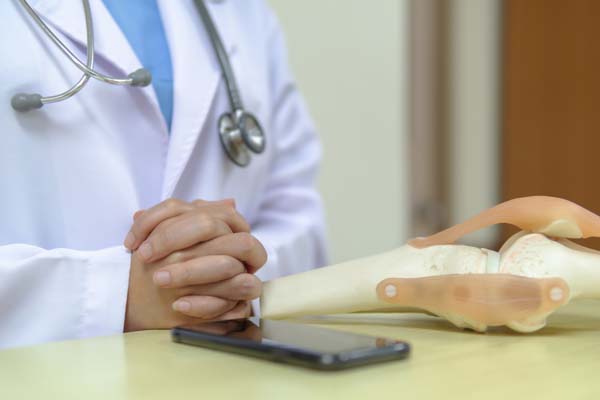Physical Therapy for Post-operative Knee Replacement Treatment

A post-operative knee replacement treatment will need the help of your physical therapist. Also known as knee arthroplasty, knee replacement is a form of surgery that aims to resurface an arthritis-damaged knee. A physical therapist can help you recover well after your procedure. Learn how physical therapy can help your post-operative knee replacement surgery.
Early post-operative knee replacement exercises
The post-operative knee replacement exercises can help improve circulation to the feet and legs. This is effective in preventing blood clots after surgery. The physical therapist can help the patient improve knee movement and strengthen muscles. Starting the exercises must happen as soon as the patient is able. Post-operative knee replacement exercises can be uncomfortable in the beginning, but they can help the patient’s recovery.
Knee extension
The patient must lie on the back during this post-operative knee replacement workout. Bend one leg and keep the foot on the bed. Place a pillow under the knee of the straight leg and work out the straight leg by pulling the toes and foot up. This straightens the knee and tightens the thigh muscle. Hold this position for about five seconds and then relax. Repeat this about 15 times each session during the three sessions each day.
Ankle range-of-motion
This post-operative knee replacement will need the patient in a back-lying position. Keep the legs straight. Bend the ankles while pushing the knees down in a firm manner against the mattress. Hold this for five seconds before relaxing. Repeat this about 15 times each session during the three sessions each day.
Seated knee flexion
Get a comfortable chair for this post-operative knee replacement exercise. Sit on it with the feet on the floor. Bend the knee and hold the position for about five seconds. The patient will have three sessions each day. Repeat this exercise 15 times for every session.
Straight leg raise
Assume a back-lying position for this post-operative knee replacement workout. Bend one leg and straighten the other. Moving the foot outwards, upwards, or inwards will give the exercise some variation. Pull the toes up, straighten the knee, and lift the leg about 20 centimeters up the mattress. Hold this for about five seconds and then relax. Repeat this about 15 times each session for the three sessions each day.
Hip abduction
The patient must stand straight and hold on to a form of stable support for this post-operative knee replacement exercise. Lift one leg to the side and then bring it back. Keep the trunk straight while performing this workout. Repeat this about 15 times each session during the three sessions each day.
Hip extension
For this post-operative knee replacement exercise, the patient must stand straight and use a chair for support. Bring one leg back while keeping the knee straight. Remember not to lean forward. Repeat this about 15 times each session for the three sessions each day.
Exercises for post-operative knee replacement can help you get back to your normal routine
Recovering from a post-operative knee replacement can take some time. Having patience and dedication can help you go through it. Working with your physical therapist can help strengthen and stabilize your knee. It can also help you go back to your normal activities.
Get more information about Orange County Physical Therapy OCPT in Newport Beach at https://ocptclinic.com.
Check out what others are saying about our services on Yelp: Post-Operative Knee Replacement in Newport Beach, CA.
Related Posts
Massage therapy is widely known for its therapeutic benefits, particularly when administered by an experienced physical therapist. Physical therapists have a unique understanding of musculoskeletal anatomy and movement and can utilize massage therapy to help patients recover. This approach, also known as physical therapy massage, reduces pain and improves overall physical health.According to the National…
Cycling performance therapy can be an important resource for athletes seeking to improve efficiency, prevent injuries, and recover from physical strain. This specialized approach, provided by a physical therapist, addresses the unique biomechanical demands of cycling while promoting long-term musculoskeletal health. Cycling performance therapy is a targeted program designed to improve a cyclist's endurance, strength, and…
Physiotherapy is a medical term that refers to physical therapy. Many individuals are familiar with physical therapy due to the common need for it among sports players and individuals who may have gotten injured or experienced a chronic illness.There is also a common misconception that physiotherapy is only needed when it comes to rehabilitating a…
Hip pain can be a debilitating condition that affects your daily activities and overall quality of life. Seeking hip pain treatment from a physical therapist when it first appears can prevent further complications and improve your health and well-being. Here are four main benefits of early hip pain treatment.Early hip pain treatment can prevent further…
